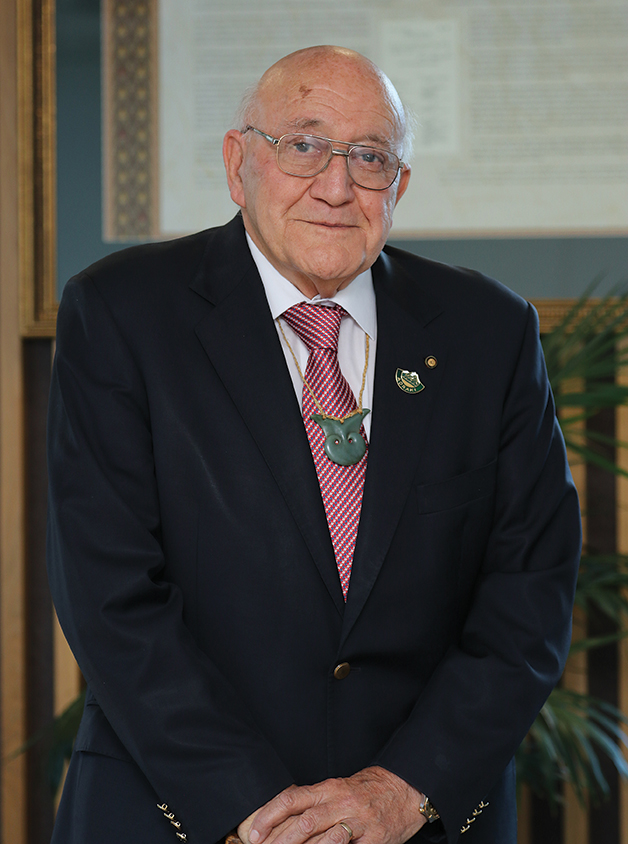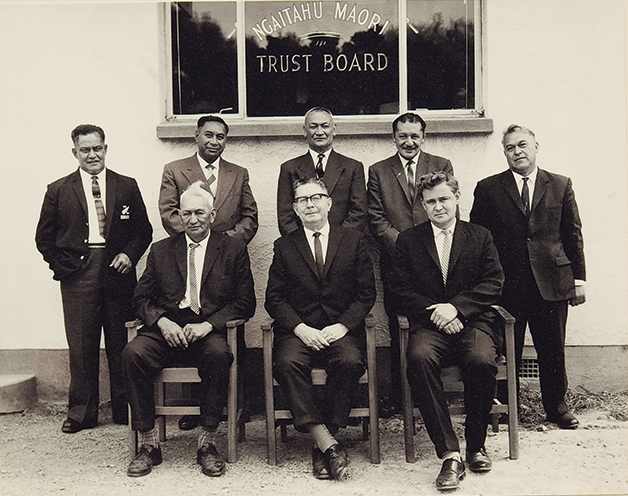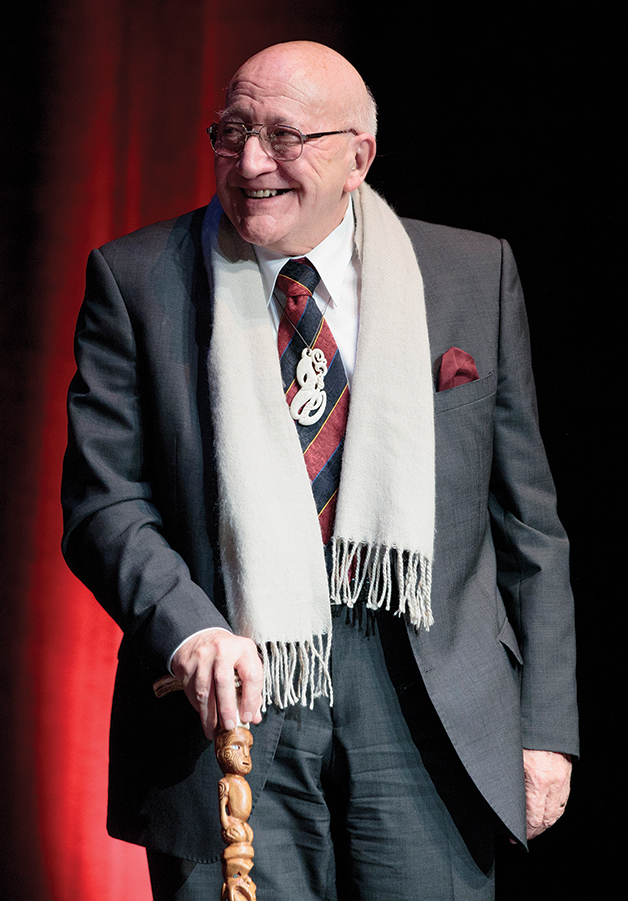Te Kerēme – a reflection
Oct 5, 2017

Nā Tā Tipene O’Regan

Twenty years ago we gathered at Takahanga Marae, Kaikōura, to execute the Ngāi Tahu Deed of Settlement with the Crown. It was only after weathering another storm-tossed year of litigation and political stress, both internal and external, that the agreement was finally passed into law by Parliament – that year was to be another story in its own right. It was the Deed of Settlement, though, that marked the turning point in the several histories that comprise the seven-generation story of the Ngāi Tahu Claims – Te Kerēme o Ngāi Tahu.
As a significant participant in the later part of those histories, I’ve been asked by TE KARAKA to summarise my views after 20 years as to whether it was all worthwhile; as to whether our collective vision has yet been realised. Have we succeeded, or has our journey thus far fallen short of that inter-generational dream?
There’s a widespread public view that we have done very well, that we have been something of an exemplary model of success for the Treaty settlement process; and there is little doubt that we have moved from being something of a disregarded non-event in a marginalised Māori world to a position of both cultural and economic respect. As a people we may not be much loved within the “Kiwi Village”, but we are certainly no longer disregarded.
Certainly, within our Iwi, there is a hugely enhanced cultural and economic confidence, and this is manifested in many ways – our marae stand increasingly redeveloped and proud, more of our young speak te reo Māori, our arts are reborn and flourishing, and we confidently and willingly invest in our own cultural renewal and the rebuilding of our own heritage. That re-established culture and heritage is increasingly becoming a significant component of the mosaic of cultures which comprise the core identity of Aotearoa New Zealand.
One of the great challenges Ngāi Tahu faced, as we began to believe that a settlement might become a reality, was to come to some conclusions as to what we’d do with it once we’d got it! Over all those generations since Matiaha first started articulating the grievance in 1849, the Claim itself had become the core expression of Ngāi Tahu culture. We’d even historically reorganised ourselves politically and socially around Te Kerēme – our generations-old rūnanga system was established to drive the Claims. With the exception of our whakapapa and our adhesion to our mahika kai, the Ngāi Tahu Claim had itself become our Ngāi Tahu culture.
But we had not formulated any clear collective aspiration of what we wanted beyond the claims themselves – of what we wanted to actually do with a settlement – of how we wanted to be! Neither had we any developed plan of what kind of organisation we wanted to manage our assets into the future, or indeed, what we wanted to do with any such assets. We were running after a bus without any clear notion of its destination!
In my earlier years I regularly had robust discussions with my kaumātua mentor, Frank Winter, chairman of the old Ngāi Tahu Māori Trust Board, about the role of the board. He argued that the only function of the board was to carefully administer money and distribute it for largely educational purposes. Beyond that, the mission was to get an increase in the annual compensation payment to the Board. In our time, through the 1970s and 1980s, my colleagues and I were to dramatically widen the role of our tribal authority. We moved out into such issues as challenging the perpetual leaseholds of the Māori Reserved Land Act (1955) and establishing the Māwhera Incorporation, the restoration of the Tītī Island title, remedying the SILNA land situation, promoting te reo, and a host of innovative actions in support of our regional rūnanga communities, including their statutory recognition. All of that, though, was done within the structure of the Māori Trust Boards Act (1955), a statute designed by the New Zealand State to manage and maintain control of Māori compensation funds nominally in the hands of tribal recipients. It was appallingly paternalist, and my generation was very much about testing the limits and the tolerance of that paternalism! The realisation that Ngāi Tahu was not allowed to spend more than $200 of its own money without the permission of the Minister of Māori Affairs was to become a major trigger of indignation in the emergent climate.

Ngāi Tahu Maori Trust Board 1965 including Tā Tipene’s mentor Frank Winter.
Back row left to right: H.J.R. Mason (Mahaanui), W. Torepe (Arowhenua), T.P.W. Robinson (Akaroa), R.A.M. Whaitiri (Murihiku), R. Ellison (Araiteuru).
Front row left to right: R. Solomon (Kaikōura – Deputy Chairman), F.D. Winter (Te Ika-a -Maui – Chairman), S.B. Ashton (Secretary).
The biggest extension that we drove in the role of our Trust Board, though, was to support the statutory struggle to extend the Waitangi Tribunal mandate, and prepare and then file the Ngāi Tahu Claims before the Tribunal. How that was done and funded, a huge story in its own right, and at an overall cost of just under $20m, taught us one big lesson. That lesson was that the existing tribal organisation could never carry the burden of a settlement!
The series of constructive debates that took place on our “Constitutional Conventions” remain in my memory as some of the most elevated and serious group discussions I have ever had the privilege of experiencing. They proceeded on principle and with great courtesy and care. The outcome was the early form of the Te Rūnanga o Ngāi Tahu structure [which] has served us pretty well on the whole and remains, after 20 years, one of the more effective models of contemporary tribal administration.
The prospect of settlement, then, challenged us with the issue of finding an appropriate institutional model that could work for a modern tribe emerging into the 21st Century. Many of our kaumātua wanted to retain their old Ngāi Tahu Māori Trust Board and they took quite a lot of persuading that it could not work, that it was whakamōkai – a creature of The State – and we wanted a structure of our own, to meet our own purposes which could take us into a post-Claim future. Above all, it had to achieve an autonomous tino rakatirataka which reflected our status as a Treaty partner and with which the Crown could relate on an appropriate basis. We’d fought the Claim on a basis of the Treaty and now was the time to re-assert that Treaty relationship. That’s what the Ngāi Tahu Legal Personality kaupapa was all about, and the Waitangi Tribunal agreed with us – and said so plainly.
The series of constructive debates that took place on these questions – our “Constitutional Conventions” – took place at our Hui-ā-Tau and as well at Arowhenua and Kaikōura and remain in my memory as some of the most elevated and serious group discussions
I have ever had the privilege of experiencing. They proceeded on principle and with great courtesy and care. More than one of our (largely Pākehā) external advisors from that time still refer to those hui with respect and admiration. The outcome was the early form of the Te Rūnanga o Ngāi Tahu (TRoNT) structure. It’s been played around with a bit since – not always very wisely – but it has served us pretty well on the whole and remains, after 20 years, one of the more effective models of contemporary tribal administration.
That’s not to say I am content with the quality of debate and discussion at the TRoNT table or with the depth of discussion accorded some significant issues. It seems to me that too much of the debate I have observed is about process rather than substantive content, and that, too frequently, our representatives are not sufficiently in command of the subject matter they’re dealing with. Again, there are major policy questions affecting Ngāi Tahu in the wider national context, issues to do with Treaty rights in a dramatically-evolving demography, a changing national constitutional discussion, and significant areas of contention over a range of customary rights which should be better protected, from a Treaty perspective. The big issues seem to me to get parked up at the margin, while the most intense discussion takes place over relatively minor operational matters.
It was a matter of pained regret to me personally that my own beloved Ngāi Tahu could not find the energy – either intellectual or bureaucratic – to develop a formal response to the Constitutional Advisory Panel (2011–2013) of which I was co-chair. Over that two-year period a number of iwi and Māori organisations around the country took the trouble to advance their considered thoughts on the future of our Constitution and about how they believed New Zealand should evolve as a nation. Importantly, they all had a view of the future of the Treaty of Waitangi in the evolution of the New Zealand Constitution. Despite some stimulating hui at our Papatipu Rūnanga, our senior leadership structure had neither the will nor the interest to make a response. They just didn’t care! I cannot accept the view that Ngāi Tahu believe that the Treaty is “past its use-by date” now that we’ve got a settlement! However, I don’t hear the debate or even the questions. It’s clear that these questions are still no longer at front of mind for our Iwi at a senior level. I can only observe that “those who forget history are condemned to repeat it!” and retire, somewhat grumpily, into my archival preoccupations.

All that said, though, it’s probably fair to say that the standard of decision-making through our structure is no worse than that to be found in the New Zealand Parliament or in much of Local Government. It could be argued, though, that’s a pretty low bar for a people whose fundamental challenge is the re-birth and future nurture of our Ngāi Tahu Nation!
Having concluded that it’s not as bad as it might be, it’s only fair to address the question of what might be done to enhance the evolution of our leadership structure.
I believe that we need to address the effectiveness of our representational model so that the widest possible base of discussion, debate, and understanding can take place. Te Rūnanga o Ngāi Tahu should be actively and constantly refining and refreshing its mandate. The enormous proportion of our (58,000-strong) membership who are distant from our tribal communion need to be actively re-engaged; they need to believe that their views and aspirations matter. We should be making a start on that challenge by remedying some of our structural mistakes which result in thousands being denied a vote; by pursuing a more consistent, and less exclusive, basis of membership in our Papatipu Rūnanga and by more creatively engaging our taurahere iwi members. And that’s just for starters!
But the people are not going to care about engaging with a leadership structure which manifests neither vision nor strategic sense. There is little attraction in engagement with a leadership fixated with process and operational “pito gazing”. I am not saying that this necessarily describes our current overall leadership, but we do not, at present, competently and intelligently demonstrate a sense of informed and strategic vision; and we don’t take that out to our people and encourage their engagement. I believe that that is what should be happening. We must rebuild the widespread sense of purpose that we had 20 years ago, and breathe fresh life back into our collective purpose.
Whilst we have, undeniably, done reasonably well financially, I have been saddened by the constantly-eroding territorial footprint in which our tribal investment strategies have resulted. We now have far less land than we had following Settlement – this despite the fact that our forests have been some of our best-performing assets. We’ve been selling them off for cash to make alternative investments or to bail out various investment disasters. It’s not hard to understand the commercial reasoning, but it is very much the view of a Pākehā traders’ market, which has no place for growing heritage assets. But the dream of 20 years ago, and the generations before us, was that we would once again become a landed people in our own country – that mana whenua should again have substance, and not be just a determinant of the speaking order in mihi whakatau!
I appreciate that there is currently a substantial tribal groundswell against this trend, and I welcome it. But the situation has been allowed to evolve over the last two decades by the absence of a clear, culturally and strategically informed direction to those charged with the management of our assets. That we recovered huge areas of profitable land 20 years ago and we today hold only a modest fraction of that territory is a huge regret to me. “Nō hea koe?” is at the very heart of the query, “Ko wai koe?”. To be rich and landless is a reasonable aim for a Pākehā investment trust. It can never be a sufficient ambition for an indigenous people seeking to recover their mana in their ancestral territory. Mana whenua needs some whenua under it!
All in all, though, even allowing for the disappointments in which I’ve been indulging and the (thankfully!) few commercial disasters, it would be churlish not to freely admit that we have done very well compared with a whole range of comparable entities.
So was it all worth it? Of course it was! There are a lot of old dreams unfulfilled – but we have time on our side and the opportunity to repair our own waka for the next phase of the voyage. That’s a privilege that those earlier generations, pooling their meagre kohikohi, never had. It is, though, our privilege – and our challenge – Aoraki Matatū!